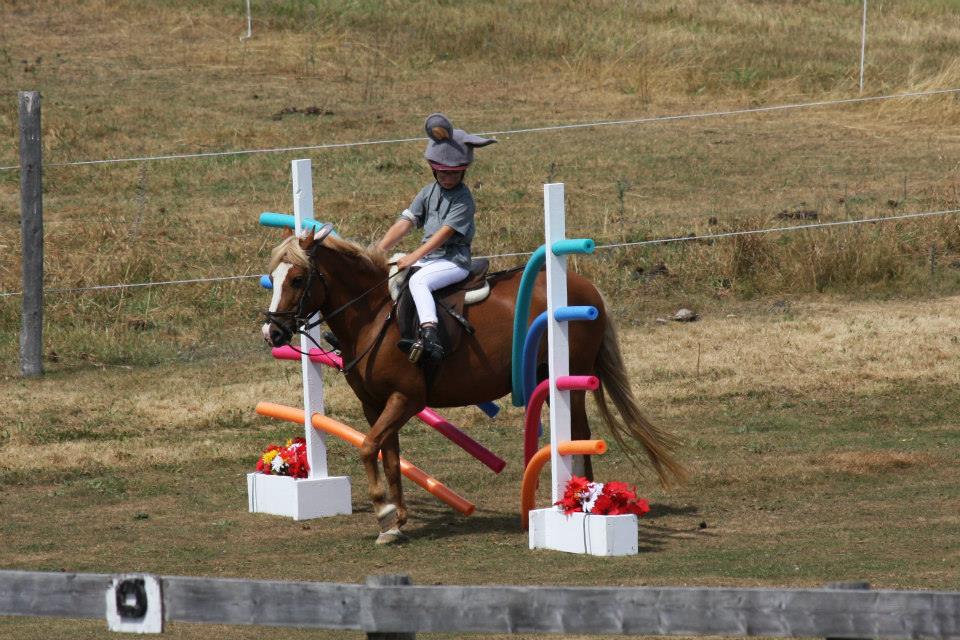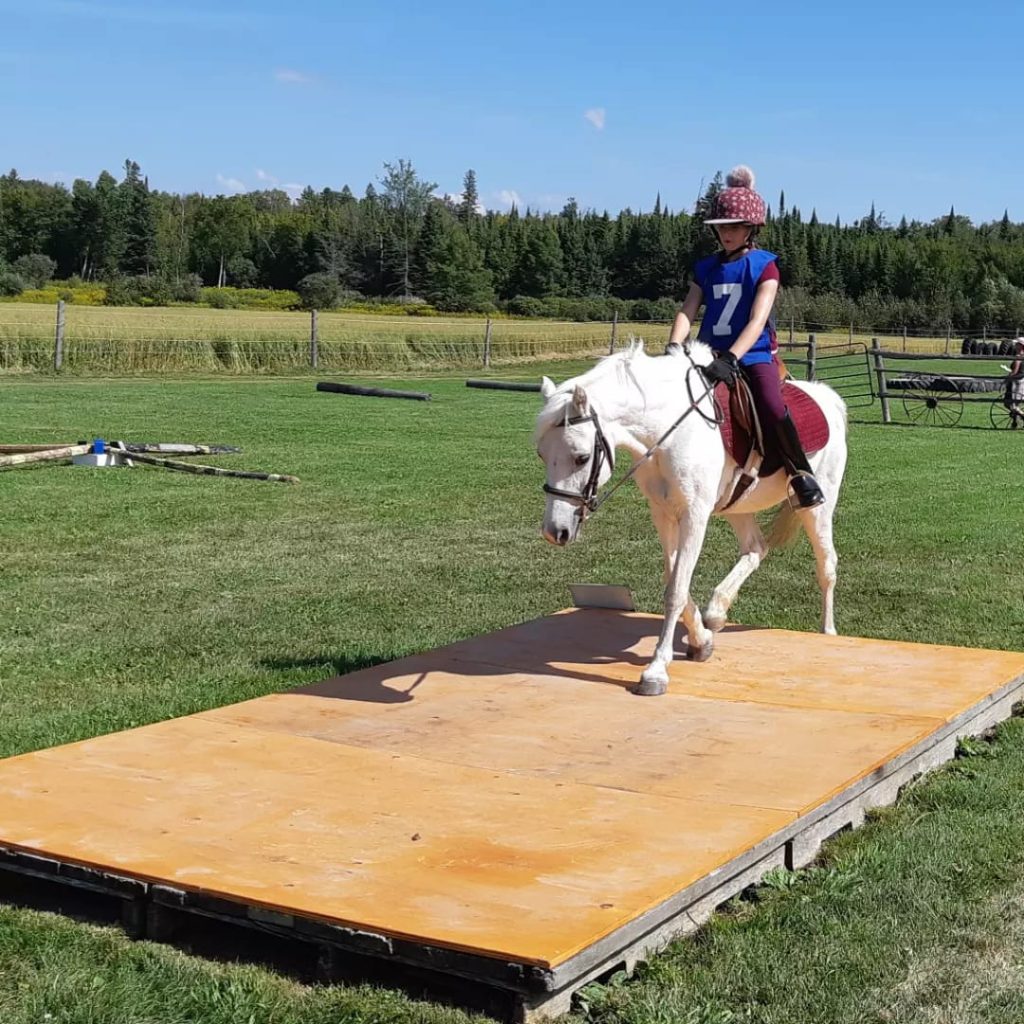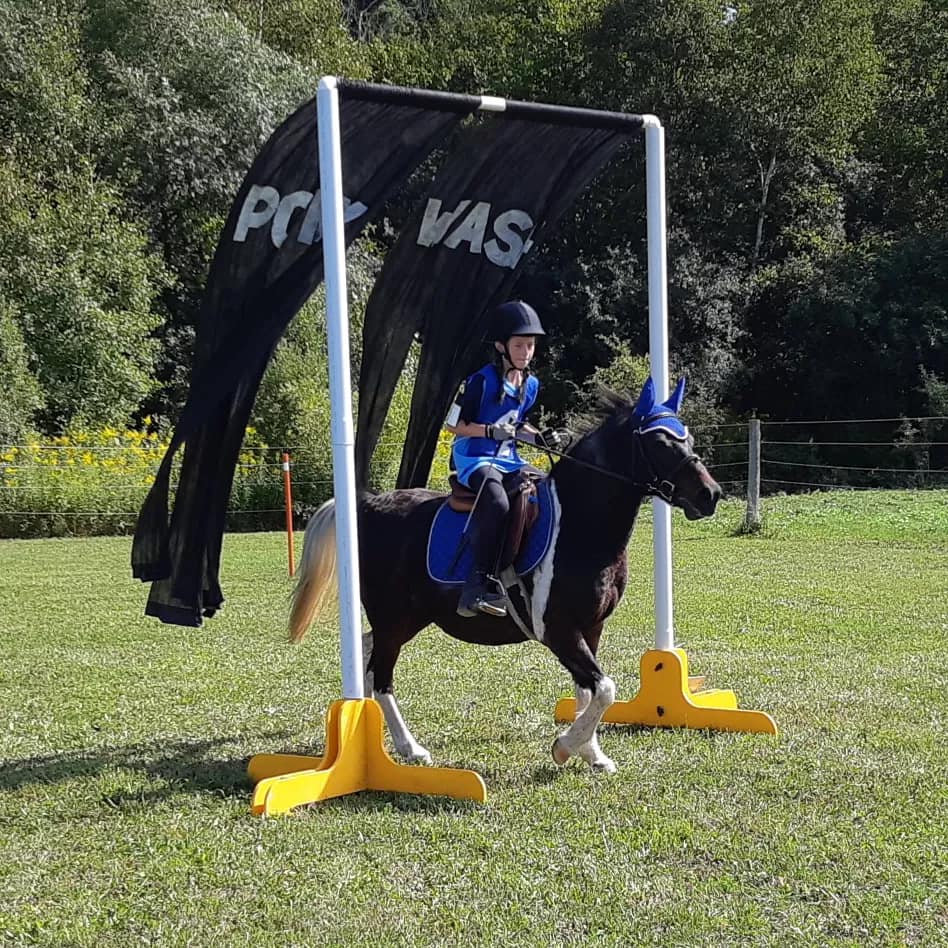LeTrec
It’s short for Technique de Randonnée Équestre de Compétition, and best described as a form of orienteering on horseback. LeTrec is one of the fastest growing equine sports in the world and involves knowledge of terrain, and an understanding of map reading is an important feature of the sport.
LeTrec is designed to test a horse/rider combination through a whole range of activities, combining elements of trail riding with horsemanship skills and flatwork. You will have an opportunity to find your way along a trail using map reading skills, and to demonstrate your horsemanship skills as you maneuver a series of obstacles and problems that one might encountered when out on a hack.



Phases of the Competition
The traditional LeTrec competition is comprised of three phases, and can take place on a single day, or be held over two days. At the higher levels, featuring a more testing orienteering ride, and at Championship level, events take place over two days, with the POR (orienteering) phase on one day, and the remaining two phases on the other day. For Pony Club, our event is one day and evenly paced to allow everyone to enjoy.
Phase One or Phase A: Parcours d’Orientation et de Regularite (P.O.R.) or Orienteering Phase
This is broadly described as orienteering on horse back. Riders must follow a route on a map, at speeds predetermined by the organizers. The POR is not a race and the majority of the course is conducted in walk and trot. Routes start from 12 km at hacking pace at beginner level, up to 45 kms long at Championship level where a higher level of horse and rider fitness is required. For Pony Club, we have modified the routes to accommodate a one day event with total distance of Phase One less than 2.5 km and easily walked by volunteers.
Phase Two or Phase B: Matrisse des Allures or Control of Paces/Gaits (CP)
This phase is designed to demonstrate that the rider can exercise a degree of influence over the horse first in Canter (or trot for younger riders), then in walk following a straight line course of 150 metres long and 2-4 metres wide. The concept is that the slower the horse travels in canter, and the faster in walk, the greater the marks awarded. A shortened course of less than 150 metres is sometimes used to accommodate younger riders. If the terrain prohibits a straight line track, then a curved track can be used. For Pony Club, we can accommodate the 150 metre long course and will do walk/trot for lower levels and walk/canter for the higher levels.
Phase Three or Phase C: Parcours en Terrain Varie (P.T.V.) or Cross Country Obstacle Course
This phase, which is generally 1km to 5kms long, is the cross-country obstacle course, and is seen as the most exciting and popular phase for spectators. While this phase may include some cross-country jumping, the size of the obstacles is set according to the level of competition and each obstacle is optional and does not incur elimination if bypassed. The course also includes some tasks which must be undertaken while dismounted, as well as tests of obedience and calmness. It is designed to give an indication of the horse/rider’s suitability to cope with the kind of obstacles and difficulties that might be encountered while riding in the countryside, and demonstrate the partnership working calmly and efficiently together. For Pony Club, participants will complete Phase Three in the same manner as “indoor LeTrec”. The obstacles are set-up in one general area with the focus on skills and horsemanship.



Scoring
The scoring is based on accumulating the most points, and one of the major appeals of this discipline is that if a horse or rider is unable to perform any part of the competition, they are not eliminated – they merely lose points. It recognizes that the demands of the competition are so wide and varied that not all riders or horses can be good at everything. Injury, cheating or losing equipment can result in elimination but generally, eliminations are very rare giving the sport considerable appeal to the less than perfect rider on the less than perfect horse.

